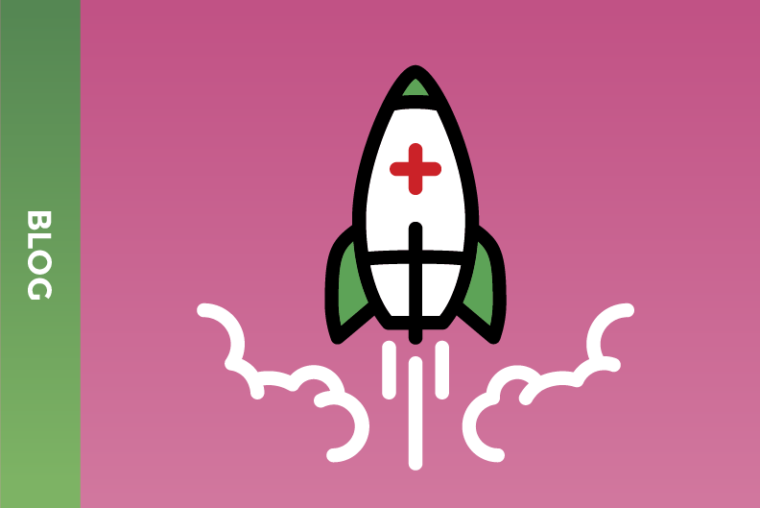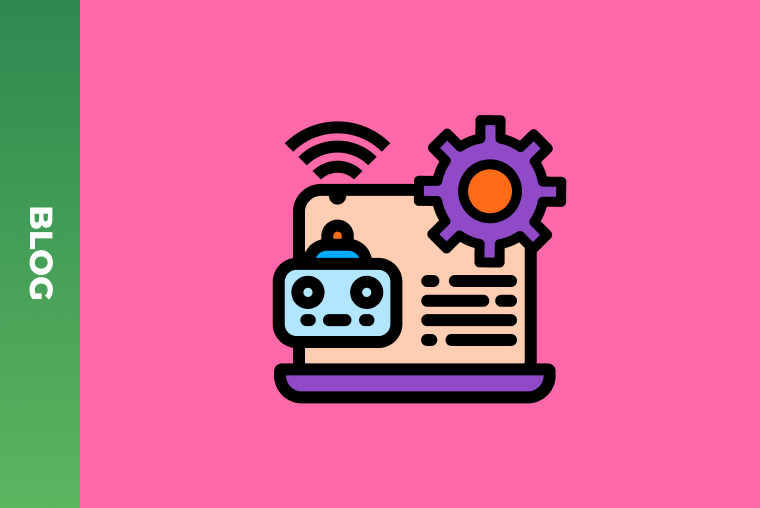How to Build an MVP for an IT Healthcare Project

Some of the top reasons so many startups fail are due to their inability to find sufficient funds, poor targeting or lack of quality research. Minimum Viable Products (MVPs) are the way to eliminate many of the risks before betting all the money on a healthcare product with an unclear outcome. It’s a step right between a prototype and a finished product. MVPs allow businesses to prepare a basic product fast with a few features to be used by customers. It will allow gathering early customer feedback and using this basic software as a carcass for a future larger product.
Building a healthcare MVP adheres to a similar pattern as building any MVP, however, there are certain specificities present in this sector.
Healthcare MVP development process
The whole MVP development process is relatively short, compared to full cycle of software development. Since the MVP’s purpose is to deliver the basic product to the customer quickly, tight deadlines and simplified approaches often take place. If we are talking about something bigger than a “two-button app”, the whole development can take anywhere from 2 to 9 months. Though, when some of the parts are done by a client prior, in our experience it can take even shorter. It’s important that you or your partners estimate the scope of the work correctly and do research if necessary. Additionally, make sure that costs are calculated properly. It can sometimes be the case that MVP funding is of the essence. Healthcare MVP development also consists of 5 steps, which we will talk about in detail just below.

First things first, the MVP should be usable and well-architected in terms of data. The very base of a good MVP is great architecture, accessible design, clear logic of integration with EHR/EMR systems, but also a clear vision for what you are trying to achieve with your platform.
Discovery and research
Research is the fundamental step to understanding how to achieve that. It will help you map the target audience, understand their problems and how your product will address them. It’s advisable to monitor the healthcare market and possible competitors for insights.
It’s also a good idea to have those compared to the products that the healthcare market already has. Maybe you want to create a modern voicebot but discover there are lots of successful health voicebots out there, and your niche lies somewhere else.
Read also: Top 10 Big Data Solutions in Healthcare – Global Forecast to 2025
Since we’re talking about healthcare, there is one last thing to gather: your healthcare requirements. Compliance with HIPAA, healthcare privacy rules (for instance, CCPA and HITECH in US, PIPEDA and others in Canada, Data Protection Act of 1988 in the UK, GDPR and public health regulations in EU), healthcare application laws are indispensable to get a hold of before building a product for this market.
Understand business and tech workflows
Clinical, patient, management, or other workflows in healthcare are created to visualize how a user experiences the app or a process your app is supposed to augment. By understanding the full path, from thought to final objective, from patient to EHR (Electronic Healthcare Records), or from hospital to the app, you can foresee the possible difficulties they face and create a solution that addresses those.
Read also: Interoperability in Healthcare: Capabilities, Trends, and Comparison of EHR Providers
A neat diagram for representation of this journey often works best. Later, it can be used for backend development and as a point of reference for why certain decisions are made.
Kick start features
All the previous research and understanding your customer should have created an idea in your head about what should be the core of your MVP.
Your final product may have large functionality, but you need to find the minimum possible features that you can go into MVP production with. On the one hand, comes the understanding of the product’s main value, meaning its business component. On the other hand, it is necessary to understand the development scope – what features can be implemented in the shortest possible time, what should be the starting data architecture for fast scaling.
Read also: Key Aspects to Consider when Creating Secure Data Platform
Maybe you thought of building a great all-round healthcare AI (Artificial Intelligence) with text, voice and face recognition, but the majority of your customers are interested in a voicebot now. Here’s your must-have. Or you wanted to develop a platform for a new government health program with finance management, numerous payment options and year-round support, but your clients would mostly like a well-made calculator for the benefits they get each year. That’s what you should focus on.
Clearly dividing the must-have, and nice-to-have, features in relation to your budget, customers and competition will get you a long way.
Before the engineering process
MVP is often a relatively short project. Its purpose is to attract customers through its usability and appeal, but also solve their immediate problems. A Healthcare MVP sits neatly at a balance scale, don’t overload it with extra elements and data, but perfect it.
Read also: From Idea to MVP: the Story of the Successful Partnership in Healthtech
For the development process, choose the best tech stack for scaling, think about integrations design (with EHR/EMR, laboratories, pre-existing hospital systems, etc.), look for the best security-compliant architecture that suits you. Depending on the complexity of the software, it might also be a good idea to create UX wireframes.
Build an MVP
Build your MVP with scalability in mind. After all, this is a product to be expanded upon later.
- Back-end and data development. Raw data is at the core of every application, so building data lakes, clouds, servers are essentially step one in the back-end. These will provide a place for storage for raw but also processed information, to ensure secure data flow through levels of protection. Tools for cleaning, duplication removing and enhancing data are built at this stage too. APIs will help in other health services, apps, data sources integrations. Data processing and BI implement business logic to be presented by front-end tools.
- Front-end development and visualization. To ensure proper communication with the server, as well as usability, front-end development uses both tech and design in order to best present the software for its intended users.
- Testing. Continuous testing is a must throughout the process.
The most recent example, in our experience, is an MVP for our partners MedASTUTE. We built a simple but powerful health tech architecture. Backend was developed with Amazon server solutions, Python and Flask. Front-end dev used Angular to develop the outer presentation and UI of the software.
This may not be the usual approach in developing an MVP, but the one we at GreenM practice as a part of our development process. We find that proof of concept (POC) for our MVP is a great way of internal validation and testing. After testing, the product is updated to a production-ready version with enhanced algorithms, better performance, and powerful BI tools.
Your output will be a working MVP and its documentation.
Read also: The GreenM Healthcare Data Platform Framework
Finally, don’t forget to get your certifications according to the relevant standards.
After all those features coded and neatly packaged in a UI and UX designs, it’s time to get your MVP under way.
Depending on your product, you may want to plan the customer journey with user frustration in mind. At times, solutions are unconventional or even revolutionary. Provide the necessary materials for the first users (like a user book or another type of guidance) and allow them to ask questions through contacting the user support quickly and getting the answers they need.
Launch and Improve
Testing product viability is here. It’s now the right time to get lots of feedback about the MVP, ask users, be it patients or doctors. Measure effectiveness with predefined KPIs. Show the product to investors. Whatever works for your specific solution? Overall, get it out as much as possible.
Measuring your success and, probably more importantly, things that need improvement is crucial for business and further development process.
Many things need to go right for business to succeed in the healthcare market. However, building a great MVP is among those that can set it to the right course. Let’s get to coding!
Want to know more? Top 5 handpicked healthcare industry insights, cases and business recommendations in your inbox every two weeks. Hit the SUBSCRIBE button below to learn about health tech with our digest!
WANT TO BUILD A HEALTHCARE MVP BASED ON OPEN DATA?
Learn how to take a concept from a business problem to a functioning solution in a very short period.






